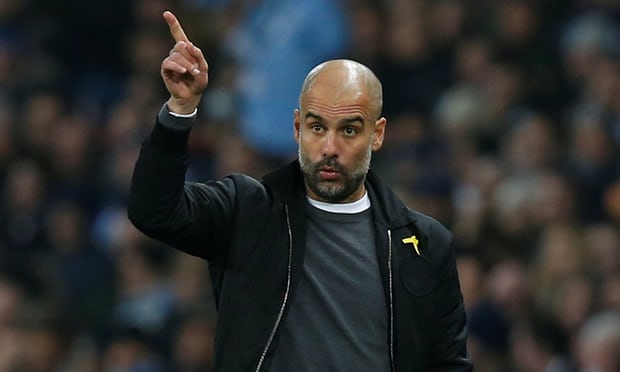The year ends with Pep Guardiola ascendant, his juego de posición, evolved over time and amended and slightly repackaged for England, cutting a swathe through the Premier League, just as it overwhelmed all in La Liga and the Bundesliga. There will be the usual complaints about how much money has been spent and, more pertinently, about the origin of that money, but English football has never seen anything quite like this.
When Guardiola was winning two Champions Leagues in three seasons at Barcelona, their style became hegemonic. There were refuseniks such as José Mourinho but the vast majority of clubs wanted to ape their way of playing. There was, briefly, a global obsession with possession statistics, which probably ended the week in 2013 when Borussia Dortmund and Bayern Munich respectively hammered Real Madrid and Barcelona in the first leg of their Champions League semi-finals playing counterattacking football.
That inaugurated a new age. Guardiola, while sticking true to his Cruyffian principles, adapted his style for the Bundesliga and became more flexible, his achievements perhaps underappreciated because of repeated defeats in the semi-finals of the Champions League and a widespread doubt about whether his methods would be transferable to a league in which one club did not have revenues 50% higher than its closest rival.
Elsewhere, though, the elite practised a range of styles. There was the German reboot, pioneered by managers such as Ralf Rangnick and Jürgen Klopp as the Bundesliga, having been resistant to a back four, hard pressing and zonal marking for so long, converted almost as one to the new method.
There was Diego Simeone with a style that had its origins in the Argentinian tradition of anti-futbol he had learned when a youth‑team player at Vélez Sarsfield under Victorio Spinetto, the originator of the style when it did not have the sinister connotations it would later take on but simply meant a mode of play rooted in organisation and effort rather than individual skill.
There was Antonio Conte, playing his hard-pressing game, and strongly influenced by Carlo Mazzone, who had also briefly coached Guardiola at Brescia. There was Max Allegri, developing the legacy Conte had left him at Juventus. There were all those other post-Cruyffians, those who had taken the Ajax style and adapted it in their own way: Louis van Gaal, Luis Enrique, Frank de Boer, Ronald Koeman, Philip Cocu, Julen Lopetegui, Peter Bosz …
The success of Real Madrid seemed appropriate for the age: they are a club that have habitually placed resources over theory and when one style did not predominate, their magpie approach, gathering up the brightest available stars and shaping what they could from them, could thrive. At the top of the game there were a range of approaches, if not necessarily Cruyffian in origin, then at least shaped by the knowledge of what Guardiola had proved possible. Even those sides who did not press high up the pitch had to work out a way of overcoming teams who pressed against them. That is how cultural revolutions tend to work: the explosion of a new style, followed by dispersal as pre‑existing modes amend themselves to cope.
It is early yet, only halfway through the Premier League season and before the knockout stages of the Champions League have begun, but this season could mark the reassertion of Guardiola’s version of post‑Cruyffianism. The Premier League last season was dominated by Conte’s 3-4-2-1 and the inability of teams to combat the freedom it gave the two inside-forwards but that question has faded beside the far more relevant one of how to stop this City.

Chelsea were the first team for 53 years to win the title using a back three as their default formation and that has had its effect. No fewer than 17 of the 20 Premier League sides have started a game this season with a back three, although there is an odd sense of self‑negation, that many sides have used three central defenders because the best way of combatting a 3-4-2-1 is, as Tottenham showed in beating Chelsea a year ago this week, with a 3-4-2-1. Manchester United this season, for instance, have used a back three from the start on four occasions, each time against a side also playing a back three.
Conte himself has adapted, so that when in August his team met Tottenham, the one side who really outplayed Chelsea last season after their switch to a 3-4-2-1, he fielded a 3-5-1-1, stifling the threat of the two opposing inside-forwards with an additional holder. That seemed a simple tweak to refine the formation that could be amended further by having the wing‑backs push so high as to effectively be a 3-3-3-1, but even six players in central defensive roles was insufficient to stop City when they won 1-0 at Stamford Bridge with an emphatic performance at the end of September.
The tenor of the year has changed utterly in the past four months. Whatever doubts there were about Guardiola and whether juego de posición could be effective in England have evaporated. It might have taken more time than in Spain or Germany, and it might have required significant expenditure but the result is football that is not merely beautiful but also dominant. All that remains is to replicate domestic success in Europe.




























